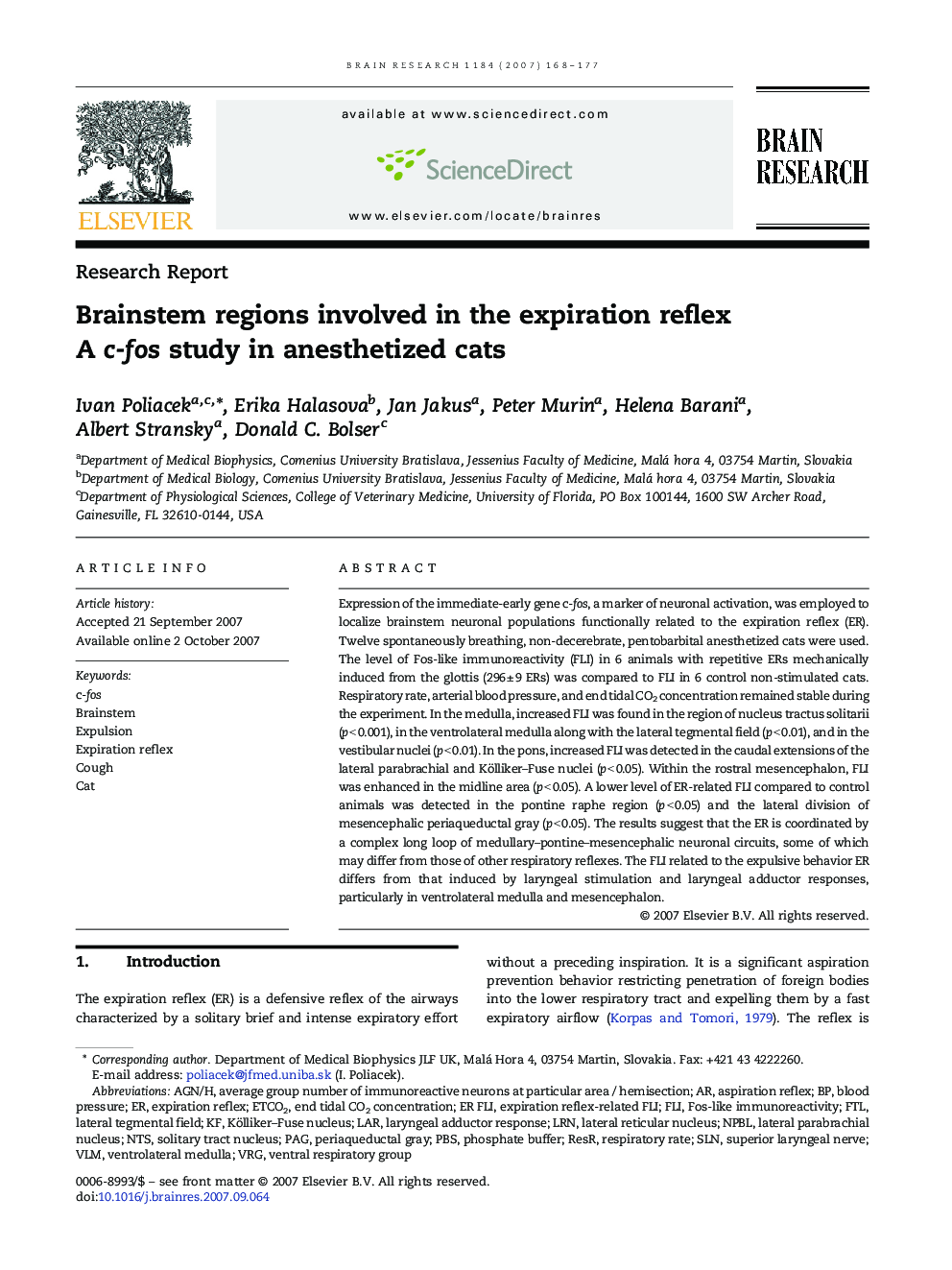| Article ID | Journal | Published Year | Pages | File Type |
|---|---|---|---|---|
| 4330349 | Brain Research | 2007 | 10 Pages |
Abstract
Expression of the immediate-early gene c-fos, a marker of neuronal activation, was employed to localize brainstem neuronal populations functionally related to the expiration reflex (ER). Twelve spontaneously breathing, non-decerebrate, pentobarbital anesthetized cats were used. The level of Fos-like immunoreactivity (FLI) in 6 animals with repetitive ERs mechanically induced from the glottis (296 ± 9 ERs) was compared to FLI in 6 control non-stimulated cats. Respiratory rate, arterial blood pressure, and end tidal CO2 concentration remained stable during the experiment. In the medulla, increased FLI was found in the region of nucleus tractus solitarii (p < 0.001), in the ventrolateral medulla along with the lateral tegmental field (p < 0.01), and in the vestibular nuclei (p < 0.01). In the pons, increased FLI was detected in the caudal extensions of the lateral parabrachial and Kölliker-Fuse nuclei (p < 0.05). Within the rostral mesencephalon, FLI was enhanced in the midline area (p < 0.05). A lower level of ER-related FLI compared to control animals was detected in the pontine raphe region (p < 0.05) and the lateral division of mesencephalic periaqueductal gray (p < 0.05). The results suggest that the ER is coordinated by a complex long loop of medullary-pontine-mesencephalic neuronal circuits, some of which may differ from those of other respiratory reflexes. The FLI related to the expulsive behavior ER differs from that induced by laryngeal stimulation and laryngeal adductor responses, particularly in ventrolateral medulla and mesencephalon.
Keywords
PBSETCO2VLMFTLVRGLRNNTSc-fosFLIPAGSLNCATKolliker–Fuse nucleusExpulsionFos-like immunoreactivityphosphate bufferperiaqueductal grayExpiration reflexLateral tegmental fieldBrainstemCoughsuperior laryngeal nerveBlood pressureLarventrolateral medullarespiratory ratelateral reticular nucleussolitary tract nucleuslateral parabrachial nucleusVentral respiratory group
Related Topics
Life Sciences
Neuroscience
Neuroscience (General)
Authors
Ivan Poliacek, Erika Halasova, Jan Jakus, Peter Murin, Helena Barani, Albert Stransky, Donald C. Bolser,
